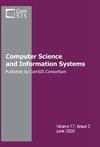SBEO:智能建筑疏散本体
IF 1.2
4区 计算机科学
Q4 COMPUTER SCIENCE, INFORMATION SYSTEMS
引用次数: 2
摘要
上下文感知室内路径概念的语义丰富描述为紧急疏散中智能空间居住者的安全带来了吸引人的好处。本文基于用户、建筑和环境三种不同的数据模型,提出了一种可重用的室内空间本体——智能建筑疏散本体(SBEO3)。我们提供室内路由和导航的通用表示,描述用户?特征和偏好,个体分组及其在特定环境中的作用,危险和紧急疏散。除其他特征外,我们还考虑了个人的能力、与每个人相关的空间的安全性和可达性、紧急事件或活动的强度、影响和严重程度。SBEO是灵活的,并且与其领域的其他本体兼容,包括SEAS、SSN/SOSA、SEMA4A和移情。我们基于几个指标来评估SBEO,证明它满足了室内空间紧急疏散的上下文感知路径推荐系统的信息需求。最后,基于仿真的应用实例利用情景感知紧急疏散软件(CAREE)利用SBEO。本文章由计算机程序翻译,如有差异,请以英文原文为准。
SBEO: Smart Building Evacuation Ontology
Semantically rich depiction of the concepts for context-aware indoor routing brings appealing benefits for the safety of occupants of smart spaces in emergency evacuation. In this paper, we propose Smart Building Evacuation Ontology (SBEO3), a reusable ontology for indoor spaces, based on three different data models: user, building, and context. We provide a common representation of indoor routing and navigation, describe users? characteristics and preferences, grouping of individuals and their role in a specific context, hazards, and emergency evacuation. Among other characteristics, we consider abilities of individuals, safety and accessibility of spaces related to each person, intensity, impact, and severity of an emergency event or activity. SBEO is flexible and compatible with other ontologies of its domain, including SEAS, SSN/SOSA, SEMA4A, and empathi. We evaluate SBEO based on several metrics demonstrating that it addresses the information needs for the context-aware route recommendation system for emergency evacuation in indoor spaces. In the end, a simulation-based application example exploits SBEO using Context-Aware Emergency Evacuation Software (CAREE).
求助全文
通过发布文献求助,成功后即可免费获取论文全文。
去求助
来源期刊

Computer Science and Information Systems
COMPUTER SCIENCE, INFORMATION SYSTEMS-COMPUTER SCIENCE, SOFTWARE ENGINEERING
CiteScore
2.30
自引率
21.40%
发文量
76
审稿时长
7.5 months
期刊介绍:
About the journal
Home page
Contact information
Aims and scope
Indexing information
Editorial policies
ComSIS consortium
Journal boards
Managing board
For authors
Information for contributors
Paper submission
Article submission through OJS
Copyright transfer form
Download section
For readers
Forthcoming articles
Current issue
Archive
Subscription
For reviewers
View and review submissions
News
Journal''s Facebook page
Call for special issue
New issue notification
Aims and scope
Computer Science and Information Systems (ComSIS) is an international refereed journal, published in Serbia. The objective of ComSIS is to communicate important research and development results in the areas of computer science, software engineering, and information systems.
 求助内容:
求助内容: 应助结果提醒方式:
应助结果提醒方式:


